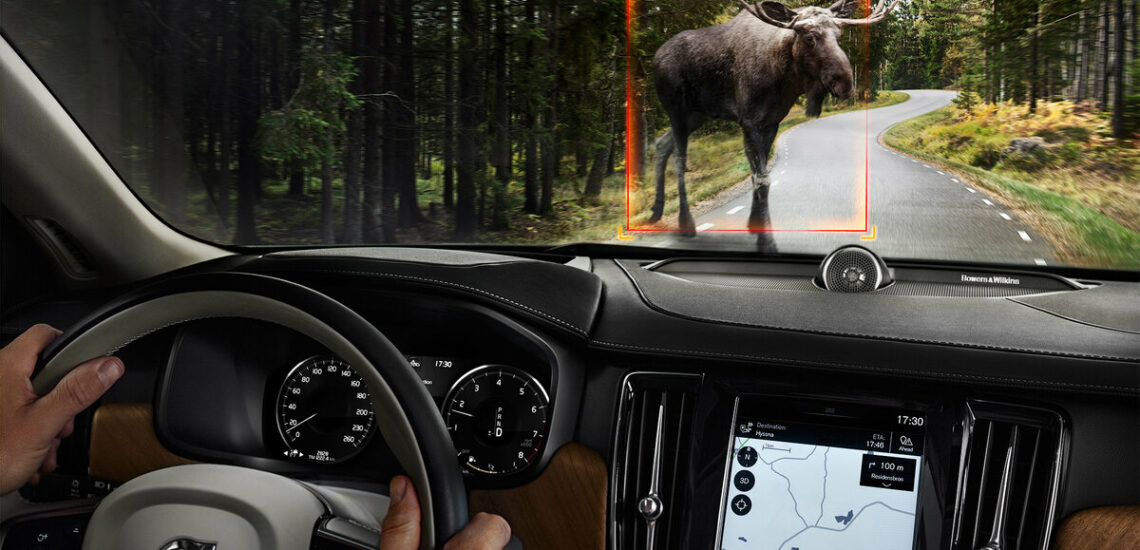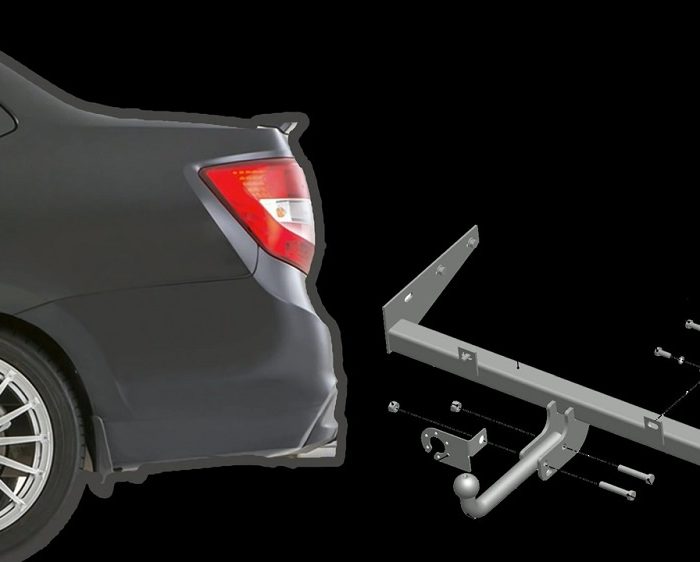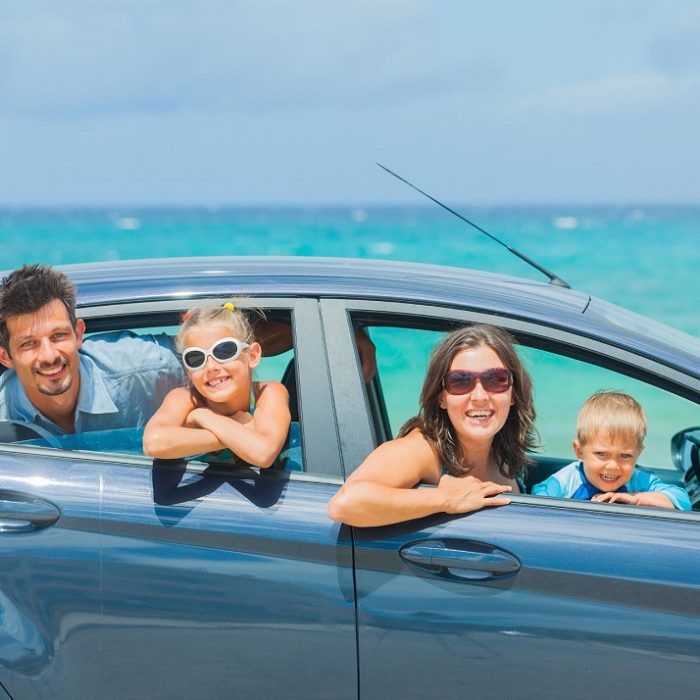Immaginate di guidare tranquillamente lungo un’autostrada, con una fitta foresta a destra e a sinistra. Se non c’è una recinzione, qualsiasi abitante di questa foresta – una volpe, una lepre, un cinghiale, un riccio – può uscire sulla strada… Ma tutti questi animali non sono assolutamente paragonabili a un alce – un’enorme creatura di tre metri con corna allargate e un peso di mezza tonnellata o più. Sono le lunghe zampe dell’alce che spesso fanno sì che la carcassa di un alce si schianti contro l’abitacolo dopo una collisione tra l’animale e l’auto. Gli airbag non hanno alcun potere in questo caso. Si spera solo che il conducente sia in grado di reagire rapidamente e di evitare un ostacolo che compare improvvisamente sulla carreggiata. La verifica della maneggevolezza e della stabilità dell’auto nella situazione di evitare gli ostacoli ad alta velocità è chiamata prova dell’alce.
Da dove deriva questo nome?
Il test è diventato noto come “alce” grazie alla Scandinavia. In quest’area del mondo, gli alci sono piuttosto comuni e anche nella piccola Finlandia, ogni anno, circa dieci persone muoiono in incidenti con gli alci. I simpatici animali cornuti compaiono più spesso sulle strade al di fuori dei centri abitati, cioè dove le auto accelerano alla massima velocità possibile.
Il termine “test dell’alce” è stato coniato dai giornalisti della rivista svedese Teknikens Varld nel 1997, anche se prima di allora, per valutare l’aderenza dei pneumatici alla superficie e verificarne le prestazioni in pista, si utilizzava un test chiamato “prova di manovra evasiva” (Undanmanöverprov), a partire dagli anni ’70 circa. In seguito, il test di stabilità dell’auto durante una manovra estrema è stato incluso informalmente nel programma di prove sul campo delle nuove auto. Tutti i modelli Volvo furono testati in questo modo per verificare la loro capacità di evitare collisioni con un ostacolo apparso all’improvviso. Si è tenuto conto del fatto che il più delle volte questo ostacolo è costituito da animali di grandi dimensioni, come alci e cinghiali, che attraversano la carreggiata direttamente davanti ai veicoli in movimento.
Condizioni per superare il test dell’alce
Di norma, la velocità media di un’auto su strade extraurbane è di 100 km/h. Se compare un ostacolo all’improvviso, il conducente frena per primo. Ma la collisione è comunque inevitabile: a questa velocità, lo spazio di frenata non è sufficiente. È quindi necessario evitare l’ostacolo – dopo l’inizio della frenata, quando la velocità scende da 100 km/h a circa 70 (in modo ottimale – 69 km/h). È stato dimostrato sperimentalmente che è a questa velocità che le auto si scontrano più spesso con gli animali. Pertanto, è importante che i conducenti imparino a evitare rapidamente un incidente e le caratteristiche di progettazione dell’auto devono aiutare a eseguire questa complessa manovra alla velocità specificata. Le sospensioni, gli ammortizzatori, le molle e gli stabilizzatori vengono regolati durante il test dell’alce in modo da salvare la vita del conducente e dell’animale.
Pertanto, le condizioni per superare il test dell’alce sono le seguenti:
1) accelerazione dell’auto fino a 100 km/h;
2) frenata;
3) cambio brusco di corsia dell’auto (circa due metri prima dell’ostacolo);
4) ritorno dell’auto nella propria corsia.
Il test si considera superato se non si verificano derapate o sbandamenti.
In questo caso, il test dell’alce viene eseguito su una pista asfaltata solo in condizioni di tempo asciutto e l’auto viene caricata fino alla sua capacità di carico nominale.
La prova dell’alce è diventata un esercizio obbligatorio per i programmi di collaudo in fabbrica. Tutte le principali case automobilistiche indicano necessariamente i risultati di questo test. Il telaio e la cremagliera dello sterzo vengono regolati di conseguenza. Le auto devono essere in grado di evitare l’ostacolo “alce” a pieno carico e con i passeggeri a bordo.
Chi è stato costretto a fare il test dell’alce?
Nel 1948, Julian Shermis morì in una collisione di una Saab con un alce. Da quel momento fino alla chiusura del marchio nel 2011, la direzione di Saab ha tenuto una statistica di tutti gli incidenti stradali che coinvolgevano animali. Per motivi di sicurezza, l’accensione della maggior parte dei modelli Saab non si trovava su un tubo dello sterzo, ma su un tunnel centrale accanto alla leva del cambio: troppi conducenti si schiacciavano le ginocchia a causa dei pesanti moduli di accensione sui tubi dello sterzo. È a causa del gran numero di incidenti con alci (6.100 in più di 60 anni) che nelle auto Saab vengono utilizzati parabrezza ad alta resistenza e montanti A rinforzati. Questa azienda automobilistica non ha risparmiato sulla sicurezza.
Nel 1997, l’autista della rivista svedese Teknikens Varld, Robert Collin, si è ribaltato con la Mercedes Classe A durante il test dell’alce. Ciò avvenne a una velocità di 60 km/h. Motivo: scarsa progettazione del telaio e tendenza al ribaltamento. Alla domanda sul perché siano necessari test così severi, i giornalisti della rivista hanno risposto: “Per verificare come l’auto si comporta nei confronti di un alce”. Di conseguenza, il termine è stato stabilito e Daimler ha dovuto investire seriamente nel design della Mercedes Classe A e spendere circa 250 milioni di dollari per aggiornamenti e modifiche tecniche. L’azienda ha dovuto richiamare tutte le 17 mila unità già vendute. Gli specialisti dell’azienda hanno completamente riprogettato l’auto, trasformandola in un veicolo più sicuro per tutta la famiglia. Hanno dovuto fare in modo che il modello compatto con una base corta cambiasse corsia senza ribaltarsi. Il fallimento del test dell’alce ha spinto la casa automobilistica tedesca a fare largo uso dei sistemi elettronici di controllo della stabilità nelle auto di alta gamma.
Quali sono i modelli di auto che superano meglio il test dell’alce?
La rivista Teknikens Varld conduce costantemente test regolari sui nuovi modelli di auto. Dopo tutto, il test dell’alce per la stabilità durante l’esecuzione di una manovra estrema è uno degli indicatori di qualità non ufficiali, ma generalmente riconosciuti.
Una delle auto migliori per superare la manovra di evasione è considerata la Porsche 911 GT2. È in grado di effettuare il doppio cambio di corsia a una velocità di 83 km/h.
Su strada bagnata, la Volvo S90 D4 diesel 2017 si è comportata meglio di tutte: 74 km/h.
La Hyundai Tucson (versione con trazione anteriore e motore diesel) ha effettuato con successo un doppio cambio di corsia a una velocità di 77 km/h e senza punti di penalità. A una velocità di 80 km/h, l’auto ha urtato dei coni, quindi, alla fine, il test è stato valutato con un voto “buono”.
La Ferrari Testarossa può vantare il superamento del test dell’alce. Allo stesso tempo, questa vettura è entrata nella top 10 delle auto più veloci su un insidioso terreno di prova svedese a una velocità di 80 km/h.
La Tesla 3, che ha un baricentro molto basso con un’elevata massa corporea, si è comportata bene nel test dell’alce. Ha aggirato l’ostacolo a 78 km/h. La buona posizione della batteria ha fornito alla Tesla Model X un centro di gravità basso, ideale per eseguire manovre evasive. Per la Tesla Model X, questo ha determinato il vantaggio rispetto a SUV simili di questa classe e ha ridotto il rischio di ribaltamento di un ampio margine.
In generale, le moderne berline di classe D possono effettuare un doppio cambio di corsia a 72-73 km/h.
A sua volta, l’auto da record che ha mostrato una velocità massima di 85 km/h nel test dell’alce è stata la Citroën Xantia Activa. Nelle auto di questo modello sono state utilizzate le sospensioni attive idropneumatiche Hydractive, che garantiscono un’eccellente maneggevolezza e stabilità, e il sistema intelligente SC CAR, che limita il rollio in curva. La Citroën Xantia Activa è riuscita a superare anche le supercar McLaren 675LT e Audi R8 V10 Plus. Anche il crossover Nissan Qashqai nella versione DIG-T 160 Acenta ha ottenuto quasi lo stesso risultato (84 km/h).
Auto che non hanno superato il test dell’alce
Le auto ibride Volkswagen Passat GTE e Skoda Superb IV non si sono dimostrate all’altezza della situazione. Entrambe le auto hanno mostrato segni di instabilità e hanno perso il controllo quando hanno raggiunto i 68 km/h e, quando la velocità di manovra è aumentata, hanno sbandato all’uscita del cambio di corsia. La poppa della Skoda Superb IV si è addirittura inclinata di lato e l’auto si è girata. Il motivo era il peso elevato delle batterie, che si trovano nella parte posteriore dell’auto e disturbano la distribuzione ideale dei pesi. Allo stesso tempo, le normali station wagon basate sui modelli Superb e Passat superano senza problemi il test dell’alce.
La Toyota RAV4 non è riuscita a superare il test dell’alce, per diverse volte di seguito. Quest’auto riesce a malapena a raggiungere la velocità richiesta di 69 km/h, la parte posteriore sbanda e in alcuni casi le ruote escono dalla superficie.
I crossover sono anche molto inferiori alle altre auto in termini di manovrabilità. È raro che riescano a evitare rapidamente un impatto a velocità superiori a 68 km/h. Gli esperti considerano le piccole auto delle classi A e B con una base inferiore a 2500 mm le più pericolose dal punto di vista della “sicurezza degli alci”. Il loro schema progettuale non consente loro di schivare rapidamente gli ostacoli. Quando si frena, la poppa dell’utilitaria si alza e la manovra successiva porta a un elevato rollio. Le city car in miniatura non sono in grado di cambiare corsia a velocità superiori a 62-63 km/h e quindi mostrano una tendenza al ribaltamento.
Anche il proprietario della sospensione anteriore a barra di torsione, il potente e pratico pick-up-SUV Ford Ranger, non ha superato l’esame “alce”. Non sarebbe in grado di evitare una collisione con la bestia a più di 65 km/h. Il motivo del fallimento è da ricercare nel peso e nelle dimensioni.
La nuovissima Macan è diventata la perdente del test dell’alce, l’auto ha oltrepassato la linea di demarcazione e non l’ha superato. La Jeep Grand Cherokee non ha superato il test al primo tentativo, perché le ruote dell’auto sono uscite pericolosamente dalla carreggiata. Successivamente, il modello è riuscito a superare il test di stabilità eseguendo con successo la manovra estrema.
Anche la Ford Focus ha subito un brutto voto nel test dell’alce, quando gli svedesi hanno fatto notare agli americani le carenze che complicano la maneggevolezza dell’auto.
Grazie al test dell’alce, le auto sono diventate più sicure. Ma non si può guidare nemmeno l’auto più sicura senza una patente di guida! Vi invitiamo a elaborare in modo semplice e veloce una patente di guida internazionale sul nostro sito web. Non ci vorrà molto tempo e fatica, ma questo documento vi sarà utile per guidare un’auto in qualsiasi parte del mondo, compresi i luoghi in cui si trovano gli alci.

Pubblicato Marzo 04, 2021 • 9m da leggere





